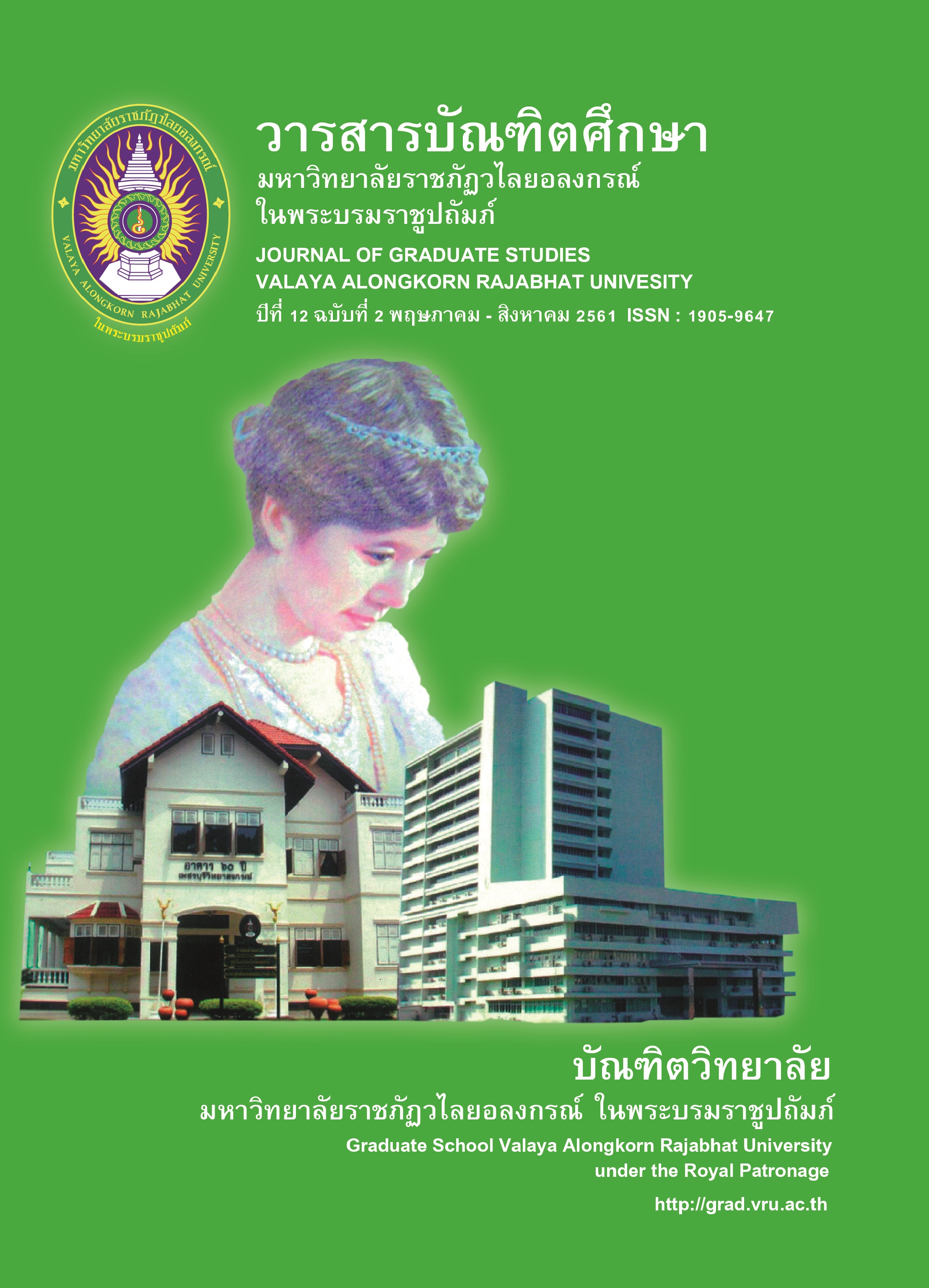KNOWLEDGE, ATTITUTUDE AND BEHAVIOR OF STUDENTS IN NAKHON SI THAMMARAT PROVINCE FOR USING ONLINE MEDIA IN STUDIES
Main Article Content
Abstract
This research aims at survey knowledge attitude and behavior of students in Nakhon Si Thammarat Province for using online media in studies. The samples are 700 students of Muang District, Nakhon Si Thammarat Province. The researchers use questionnaire with 100 samples for each school, totally 700 samples and this research is accidental sampling. To analyze results, the researchers employ Statistical Package for the Social Sciences and find out frequency and percentage. The finding is found that in case of their knowledge, attitude and behavior of samples for using online media in studies, in 1 week, students perceive online media most and they perceive every day. The type of online media which students perceive most and every day is facebook. For using online media, students want to chat with friends most; the result shows that students in 6 schools reply this issue as the primary reason. There is only 1 school which perceives online media for following information, goods, products or several services. Most students use online media through smartphone and they use at their houses and schools respectively. The time period for using online media per day is 4-6 hours. The time using is at night (7.01 PM– 12.00 PM) and in the evening (4.00 PM-7.00 PM) in quite similar proportion. The students from 3 schools give reason to use online media that is for being resource for giving knowledge and entertainment as the same time. In addition, it is for relaxing stress from studies, chatting studies’ problem and personal problem with teachers, searching for information and working with computer which is easy for recording information. The problems in using online media in studies is copying information without analysis and synthesis, taking over time with online media until it harms their studies. Moreover, there are problems about speaking rudely and quarrelling resulted from using online media, using smartphone or computer during studying and expressing aggressive behavior resulted from over addition of online media.
Article Details
บทความทุกเรื่องได้รับการตรวจความถูกต้องทางวิชาการโดยผู้ทรงคุณวุฒิ ทรรศนะและข้อคิดเห็นในบทความวารสารบัณฑิตศึกษา มหาวิทยาลัยราชภัฏวไลยอลงกรณ์ ในพระบรมราชูปถัมภ์ มิใช่เป็นทรรศนะและความคิดของผู้จัดทำจึงมิใช่ความรับผิดชอบของบัณฑิตวิทยาลัย มหาวิทยาลัยราชภัฏวไลยอลงกรณ์ ในพระบรมราชูปถัมภ์ กองบรรณาธิการไม่สงวนสิทธิ์การคัดลอก แต่ให้อ้างอิงแหล่งที่มา
References
นุชรีย์ สุบินรัตน์. (2558). นักวิชาการหวั่นโลกยุคย่นย่อ ภาษาไทยเสี่ยงสูญเสียเอกลักษณ์และ สุนทรียศาสตร์. สืบค้นจาก https://talung.gimyong.com/index. php?topic=393911.msg2264275#msg2264275.
วงธรรม สรณะ. (ม.ป.ป.). การบูรณาการการเรียนการสอนโดยใช้สื่อสังคมออนไลน์ หลักสูตรรัฐประศาสนศาสตร์. สืบค้นจาก https://www.social.rbru.ac.th/pageNew/
research/budget%20year%2054/11.Integration%20of%20teaching%20and%20learning%20by%20Social%20Network.pdf.
สำนักงานเขตพื้นที่การศึกษามัธยมศึกษาเขต 12. (ม.ป.ป.). โรงเรียนมัธยมศึกษา จังหวัดนครศรีธรรมราช. สืบค้นจาก https://www.sea12.go.th/.
สำนักงานพัฒนาธุรกรรมทางอิเล็กทรอนิกส์ (องค์การมหาชน). (2557). ฉลาดรู้เน็ต 1 ตอน Internet of Things (IOT). กรุงเทพ ฯ : สำนักงานพัฒนาธุรกรรมทางอิเล็กทรอนิกส์ (องค์การมหาชน).
อรวรรณ ปิลันธน์โอวาท. (2554). การสื่อสารเพื่อการโน้มน้าวใจ. (พิมพ์ครั้งที่ 6). กรุงเทพ ฯ : จุฬาลงกรณ์มหาวิทยาลัย.


